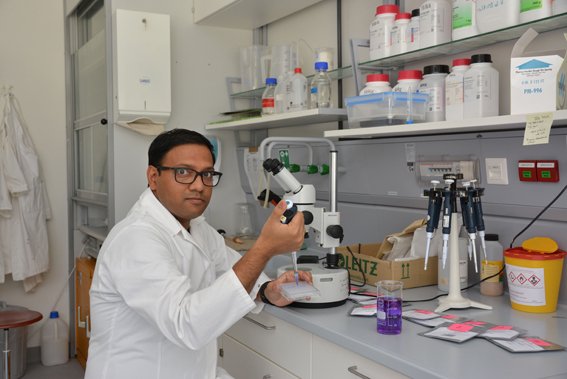- Share this article
- Subscribe to our newsletter
Seed bank management
Both wild and useful plant diversity is declining rapidly. One option to retain plant biodiversity is seed banks. However, the management of such collections is a complicated process, since the stored seeds have to be regularly tested for their germinability. Tests applied so far have proven to be unreliable. Now scientists at the University of Osnabrück have developed a germination test that does not bear these disadvantages and have given an account of the new technique in the renowned specialist journal "Trends in Plant Science".
As Osnabrück biologists Said Mohammed, Samik Bhattacharya and Klaus Mummenhoff report in a press release, tests used so far are partially unreliable and time-consuming, and they require considerable labour input. Moreover, the seeds tested can easily be damaged. “For the test now developed in Osnabrück, which is simple to apply and is reliable, a test liquid is added to the individual seeds, and a colour change demonstrates germinability,” explains plant scientist Mummenhoff.
A blue test liquid indicates fully viable and germinable seeds, a pink one already aging seeds and a colourless one damaged seeds or seeds of only limited germinability. “The colour change comes from the natural release of organic substances from aging seeds,” Mummenhoff notes. “Germinable seeds are not damaged by the test and can be retested at a later stage.”
Only simple apparatus required for germination test
In addition to testing individual samples, the method can be automated with the usual laboratory apparatus. This enables thousands of seed samples to be tested every day. “At a cost of less than a euro for a thousand seed samples, our test is especially interesting for institutions in so-called developing countries,” Mummenhoff maintains.
At Osnabrück University’s Department of Biology, extensive seed banks are maintained in the Botanical Garden and by the Botany Working Group for biodiversity conservation and research programmes. Samples from the Loki Schmidt Gene Bank for Wild Plants at the Botanical Garden have also been used in the development of the new test method.
(idw/wi)
More information:
Original article:
<link www.cell.com/trends/plant-science/fulltext/S1360-1385(19)30144-X or Alive: Simple, Nondestructive and Predictive Monitoring of Seedbanks</link>
(<link doi.org/10.1016/j.tplants.2019.05.014>https://doi.org/10.1016/j.tplants.2019.05.014</link>)





Add a comment
Be the First to Comment